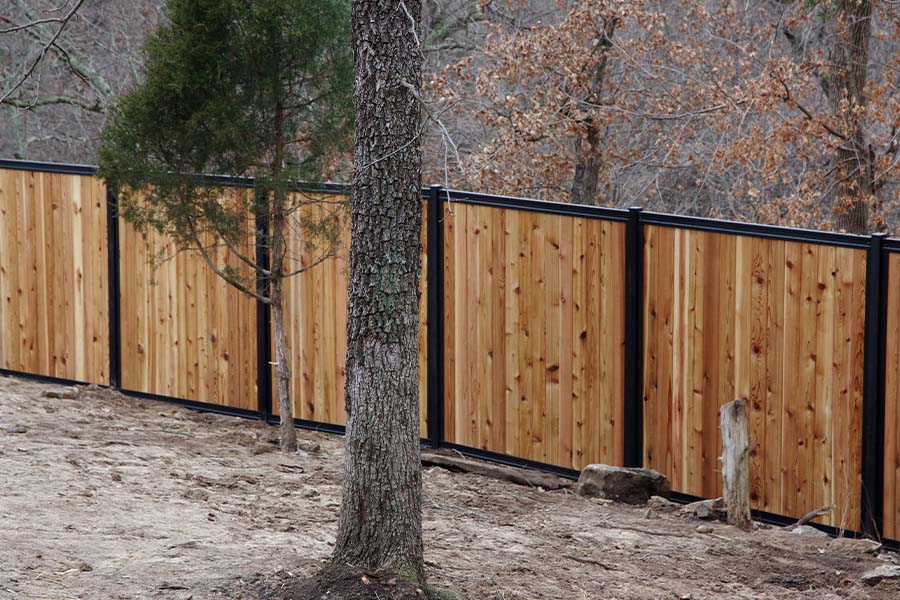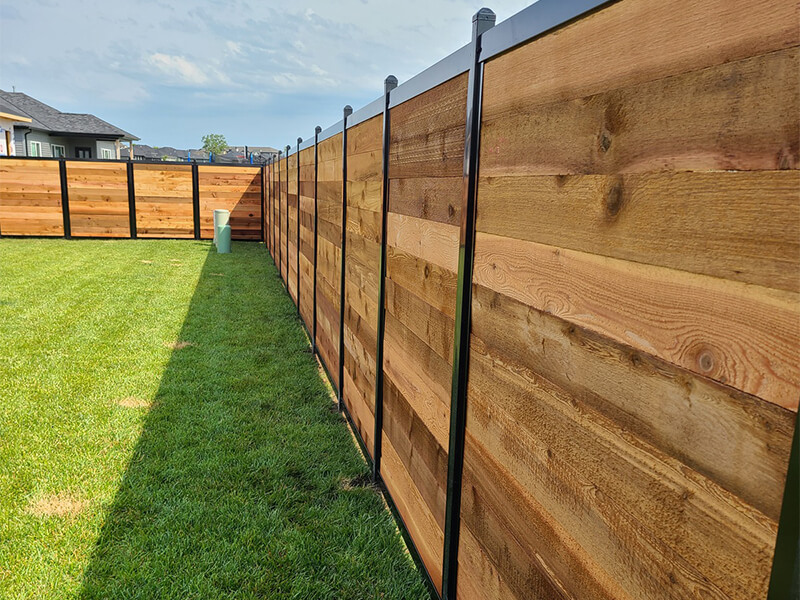All Categories
Featured

As sustainability ends up being a growing priority for house owners and services, the need for green building materials expands to exterior spaces, consisting of fences. Conventional fence materials such as metal, timber, and vinyl can have substantial environmental influences, from logging to chemical therapies and plastic waste.
- Bamboo Fencing. Bamboo is among one of the most sustainable products on the marketplace, and it is significantly utilized in fencing construction due to its rapid growth and stamina. Unlike hardwood trees, bamboo is a yard that can expand back completely within just a few years, making it very renewable. It's naturally immune to insects and rot, which suggests it doesn't call for extreme chemicals or treatments, making it an environmentally friendly selection.

Perks: Bamboo fences are durable, low-maintenance, and naturally degradable. They are normally immune to termites and dampness, minimizing the demand for chemical preservatives. Furthermore, bamboo helps in reducing soil disintegration because of its deep origin systems. Factors to consider: Bamboo can be much more pricey than some traditional wood secure fencing alternatives, and it may not appropriate for locations with extreme cold or freezing temperature levels, as it can come to be breakable with time. 2. Recycled Materials Fence. Secure fencing made from recycled materials is a fantastic way to advertise sustainability. Several producers currently use fencings made from post-consumer plastic, recycled timber, and even repurposed steel. By selecting secure fencing made from recycled materials, you decrease the demand for brand-new sources and assist avoid waste from winding up in garbage dumps. Many composite materials, for example, are made from recycled plastic bottles, timber scraps, and various other products that would otherwise be thrown out.
Benefits: Recycled material fences assist conserve natural sources, lower air pollution, and lower the environmental influence of the production procedure. They can likewise supply excellent sturdiness, withstanding degeneration, mold, and termites. Considerations: While recycled material fences are very resilient and green, they might not have the exact same natural visual that some property owners seek. Makers currently provide designs that resemble the appearance of timber or stone. 3. Composite Fence. Composite secure fencing is made from a blend of timber fibers and plastic, often including recycled materials. This mix produces a highly resilient, low-maintenance fence that does not call for routine painting or staining, making it a sustainable option. Compound fences are immune to rot, insects, and weathering, which indicates they can last for several years without the requirement for regular substitutes.

Perks: Compound fences are durable and can hold up against extreme climate condition, decreasing the requirement for repair work or substitutes. Given that composite products usually consist of recycled material, they help in reducing plastic waste. In addition, they do not call for damaging chemicals or treatments. Considerations: Compound fencings can have a higher in advance cost than typical timber or vinyl, though their durability and minimized maintenance prices typically make them an extra cost-effective option in the lengthy run. 4. Living Fencings. Living fences, additionally called hedgerows, are an environmentally friendly and cosmetically pleasing option that involves growing thick shrubs, trees, or climbing plants along your property line to create a natural obstacle. Popular plants for living fences consist of boxwood, privet, and holly. These plants can be expanded to give privacy, windbreaks, and noise decrease while adding to ecological health and wellness.
Advantages: Living fences advertise biodiversity, enhance air top quality, and absorb co2, making them one of one of the most eco-friendly fencing choices. They likewise supply a natural environment for insects and birds and can reduce environmental pollution and assist regulate temperature levels in your yard. Factors to consider: Living fences call for normal upkeep, such as trimming, watering, and sometimes pest control. They also take time to develop and might not provide instant personal privacy contrasted to strong timber or plastic fencings. 5. Cedar and Redwood Fence. Cedar and redwood are preferred natural timber options for fencings. These products are durable and normally resistant to rot, insects, and moisture, which suggests they usually don't require using unsafe chemical therapies. When sourced from sustainably handled woodlands, cedar and redwood fencings can be an eco-friendly selection that offers both beauty and durability.
Perks: These timbers are naturally degradable, eco-friendly, and offer superb sturdiness and natural appeal. Cedar and redwood likewise have a reduced environmental influence when harvested responsibly, making them an environmentally friendly option for lots of property owners. Factors to consider: While cedar and redwood fencings have ecological benefits, they do still need occasional maintenance and are extra expensive than other wood choices. It's crucial to guarantee that the wood is sourced from sustainable woodlands to maximize its environmental benefits. 6. Rock and Brick Secure Fencing (Redeemed) Rock and block fencings are incredibly resilient and low-maintenance, and they can be environmentally friendly when made from redeemed materials. Redeemed rock and block are typically restored from old buildings or building jobs, lowering waste and preserving natural deposits. These products offer a classic look and are extremely immune to weathering, making them a resilient service for fencing.
Perks: Redeemed rock and brick are resilient, cosmetically pleasing, and call for minimal maintenance. By repurposing these materials, you help in reducing the need for brand-new resources and lower waste in garbage dumps. Considerations: The setup of stone and block fencings can be labor-intensive and much more costly contrasted to other products, however their longevity and low maintenance requirements can make them economical in the lengthy run. Conclusion. Environment-friendly fencing choices are not just great for the environment however additionally use longevity, low maintenance, and aesthetic allure. Whether you select bamboo, recycled products, composite fencing, living fences, or lasting timber like cedar and redwood, there are several methods to lower your environmental footprint while boosting your building's look. By picking these eco-conscious products, you can add to a much healthier earth and produce an outside area that shows your worths.
Latest Posts
Professional Residential Roof Solutions You Can Trust Fund
Published May 25, 25
1 min read
Picking the Right Roofing Shade: Influence On Energy Performance
Published May 24, 25
1 min read
Experience WyHy FCU – The Key to Smarter Finances in Wyoming
Published May 22, 25
1 min read